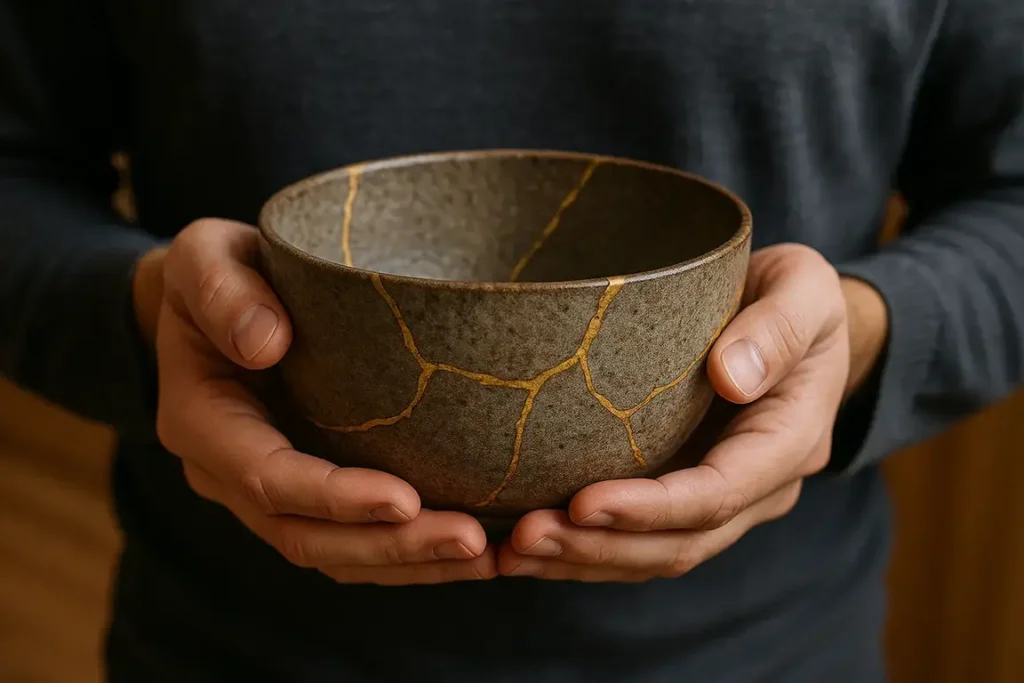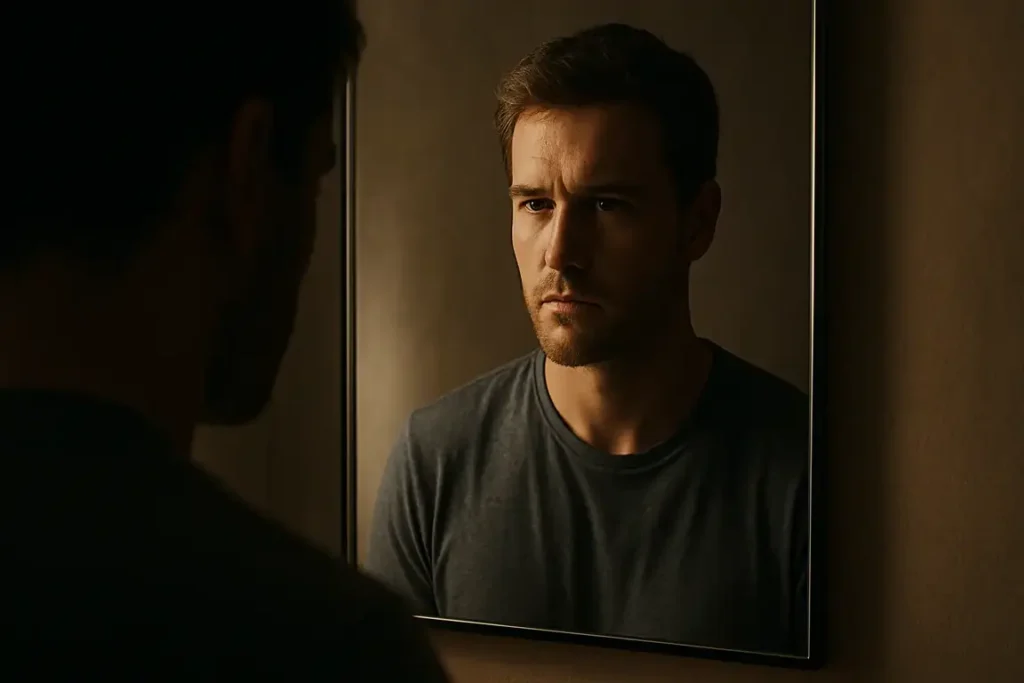What if I told you that the one thing you’ve been avoiding your whole life could be the key to everything you want?
Most people hear the word “pain” and immediately think of something to avoid. We take painkillers at the first sign of discomfort. Quit our jobs when they get challenging. We end relationships when conflict arises.
But here’s what successful people know that others don’t: pain is not your enemy—it’s your greatest teacher.
In this article, you’ll discover why pain might be the most powerful word in your vocabulary for personal transformation. You’ll learn how to reframe your relationship with discomfort, turn obstacles into opportunities, and use your struggles as stepping stones to success.
Are you ready to transform your biggest challenges into your greatest advantages? Let’s dive in.
Why We’re Wired to Run from Pain (And Why That’s Holding Us Back)
Your brain has one primary job: to keep you safe and alive.
For thousands of years, this meant avoiding anything that could hurt you. Pain meant danger. Discomfort meant death. So we evolved to run from anything uncomfortable.
The problem? We’re not dodging saber-toothed tigers anymore.
Dr. Matthew Lieberman at UCLA discovered something fascinating about how our brains process pain. When we experience emotional discomfort—rejection, failure, disappointment—the same neural pathways light up as physical injury. Your brain is literally unable to distinguish between a broken bone and a broken heart.
This is why difficult conversations feel so threatening. This article explores why public speaking terrifies us. Why do we stay in jobs we hate rather than risk the discomfort of change?
Your ancient brain is protecting you from dangers that no longer exist.
But what if we could reprogram this response? What if instead of running from pain, we learned to run toward it?

The Hidden Gift Inside Every Struggle
Sarah was 45 when she got laid off. Twenty years with the same company, gone overnight. She spent weeks in bed, paralyzed by fear and anger.
Then something shifted.
She realized this wasn’t just an ending—it was a beginning. The business idea she’d been too scared to pursue? Now she had nothing to lose. The risks that once seemed impossible? They felt manageable compared to the pain of staying stuck.
Today, Sarah runs a seven-figure consulting firm. She employs twelve people and says getting fired was the best thing that ever happened to her.
Growth through pain isn’t just a motivational slogan—it’s a psychological reality.
Research by Dr. Richard Tedeschi on post-traumatic growth shows that 70% of people who face major life crises report positive changes afterward. They develop deeper relationships, greater appreciation for life, increased personal strength, and discover possibilities they never saw before.
The key isn’t avoiding pain—it’s learning how to use it.
The Neuroscience of Resilience: How Your Brain Grows Under Pressure
Think of your brain like a muscle. When you lift weights, you create tiny tears in muscle fiber. Your body repairs these tears with stronger tissue. Over time, you get stronger.
Your brain works the same way.
Each time you face discomfort and push through, you’re literally rewiring your neural pathways. Dr. Carol Dweck’s research on growth mindset reveals that our brains form new connections when we embrace challenges instead of avoiding them.
Here’s what happens when you stop running from pain:
Your Prefrontal Cortex Strengthens
This is your brain’s CEO. It makes decisions and regulates emotions. Every time you choose courage over comfort, you’re building mental muscle. The next challenge becomes easier because you have evidence of your own strength.
Your Stress Response Improves
Repeated exposure to manageable stress (scientists call this hormesis) teaches your nervous system to stay calm under pressure. You develop what researchers call “stress inoculation”—like a vaccine for anxiety.
New Neural Networks Form
Your brain creates superhighways to resilience. What once felt overwhelming starts to feel manageable. You develop pattern recognition for solutions instead of just problems.
Pain makes you stronger at the cellular level.
Reframing Pain: From Enemy to Ally
Words have power. The stories we tell ourselves become the lives we live.
Most people have a toxic relationship with pain. They see it as punishment, failure, or something to escape immediately. But successful people think differently about discomfort.
They ask different questions:
- Instead of “Why me?” they ask, “What is this teaching me?”
- Instead of saying, “I can’t handle this,” they say, “I’m growing stronger through it.”
- Instead of “This is terrible,” they think, “This is temporary and transformative.”
What if “pain” became a power word in your vocabulary?
Consider the Japanese art of Kintsugi. When pottery breaks, artists don’t throw it away. They fill the cracks with gold, creating something more beautiful than the original. The scars become the most stunning part of the piece.
Your struggles work the same way. They’re not flaws to hide—they’re golden veins that make you uniquely valuable.

The Success Secret is Hidden in Plain Sight.
Every expert was once a beginner who refused to give up.
Michael Jordan was cut from his high school basketball team. Oprah was fired from her first television job and told she was “unfit for TV.” Stephen King’s first novel was rejected 30 times before it was published.
What separated these eventual superstars from everyone else who faced similar setbacks?
They made pain their teacher instead of their master.
James Clear, author of Atomic Habits, explains it perfectly: “You do not rise to the level of your goals. You fall to the level of your systems.” Pain teaches us to build better systems.
When you get rejected, you improve your pitch. When you fail, you refine your process. And with struggle, you develop skills you never knew you needed.
Every “no” gets you closer to “yes.” Every failure contains the blueprint for your next success. And every painful experience is data you can use to make better decisions.
The Practical Power of Embracing Discomfort
Knowing the theory isn’t enough. You need practical tools for when life hits hard.
Here are five daily practices that will transform your relationship with pain:
1. The Growth Question (2 minutes)
When facing any challenge, pause and ask, “How is this making me stronger?” Write down three specific ways this difficulty builds your character, skills, or resilience.
2. Voluntary Discomfort (15 minutes daily)
Once a day, choose discomfort. Take cold showers. Exercise until it burns. Have that difficult conversation. Practice feeling uncomfortable on purpose so you’re ready when life forces discomfort on you.
3. The Obstacle Inventory (Evening)
Before bed, list the day’s challenges and what you learned from each. Viktor Frankl, who survived Nazi concentration camps, discovered that finding meaning in suffering transforms pain from destructive to constructive.
4. Future Self Visualization (5 minutes)
When overwhelmed, imagine yourself one year from now, looking back at this challenge. What would that stronger, wiser version of yourself want you to know? What would they be proud of you for doing?
5. The Scar Story (Weekly)
Keep a journal of struggles and lessons learned. When you feel weak, read about times you were strong. Your past pain becomes proof of your future potential.
Why Your Scars Are Your Credentials
The counselor who’s never faced depression can’t truly help someone drowning in darkness. The business coach who’s never failed doesn’t understand the weight of starting over. The parent who’s never struggled can’t guide a child through adversity.
Your pain permits you to help others.
Think about the people who’ve had the most positive impact on your life. Likely, they didn’t have an easy time. They were the ones who had been where you are and found a way through.
Your struggles aren’t random. They’re preparing you for a purpose only you can fulfill.
The Compound Interest of Character
Small deposits of courage compound over time.
Each time you choose growth over comfort, you make a deposit in your character’s bank account. Each time you face fear instead of avoiding it, you build psychological strength.
Over months and years, these small choices create a massive transformation.
The benefits of pain extend far beyond personal growth:
- Enhanced problem-solving abilities
- Deeper empathy and compassion
- Increased creativity and innovation
- Stronger relationships and social connections
- Greater meaning and purpose in life
Research from the University of Pennsylvania shows that people who’ve experienced moderate adversity report greater life satisfaction and mental toughness than those who’ve lived cushioned lives.
There’s a sweet spot of struggle that creates anti-fragile humans—people who get stronger under stress instead of breaking.
From Victim to Victor: The Ultimate Reframe
Life will test you. This isn’t pessimism—it’s reality.
The question isn’t whether you’ll face difficulties. The question is how you’ll respond when they arrive.
You have two choices:
- Let pain make you bitter. Blame others. Play victim. Stay stuck in your story of suffering.
- Let pain make you better. Learn from setbacks. Build resilience. Use your struggles as fuel for growth.
The first choice is easier in the short term, but it has devastating consequences in the long term. The second choice is harder initially but transformative over time.
Overcoming challenges isn’t about being tough—it’s about being smart. It’s about recognizing that every obstacle contains the seeds of opportunity.
The Power of Perspective: Your Pain Has Purpose
Marcus was devastated when his wife died from cancer. Grief consumed him for months. He couldn’t see past the darkness.
But slowly, he began to channel his pain into purpose. He started a foundation in her memory. He became the father his children needed during their darkest hour. And he learned to cook her favorite meals and tell her favorite stories.
The love didn’t disappear—it transformed.
This is what psychologist Dan McAdams calls “meaning-making.” The most fulfilled people share a common theme: they’ve transformed personal suffering into contribution to others.
Your pain isn’t punishment—it’s preparation.

Daily Practices for Making Pain Your Power Word
Transformation happens in the small moments. Here’s how to make pain your ally every single day:
Morning Intention Setting: Start each day by asking, “What challenges might I face today, and how can I use them for growth?”
Midday Check-ins: When discomfort arises, pause and reframe: “This feeling means I’m growing” instead of “This feeling means something’s wrong.”
Evening Reflection: Ask yourself, “What did my struggles teach me today? How did they make me stronger?”
Weekly Growth Review: Look for patterns in your challenges. What skills are you developing? What character traits are you building?
Monthly Progress Assessment: Compare who you are now to who you were 30 days ago. How has working through difficulties changed you for the better?
The Choice That Changes Everything
Right now, you’re at a crossroads.
You can continue to view pain as your enemy by avoiding discomfort, avoiding challenges, and taking precautions.
Or you can make a different choice.
You can decide that pain is your teacher. That struggles are opportunities. Those obstacles are stepping stones.
You can make “pain” your power word.
This does not imply seeking suffering or enjoying hardship. It involves recognizing that growth and comfort cannot coexist. It means understanding that the cave you fear to enter holds the treasure you seek.
Embracing discomfort isn’t about being masochistic—it’s about being strategic. Every successful person has learned to dance with difficulty rather than run from it.
Conclusion: Your Transformation Starts Now
The next time pain knocks on your door—and it will—don’t hide.
Open the door. Invite it in. Ask what it came to teach you.
Listen to its lessons. Use its wisdom. Let it transform you from who you were into who you’re meant to become.
Your future self is waiting on the other side of your current struggle. The only way to reach them is through the fire, not around it.
Personal growth isn’t just about becoming better—it’s about becoming who you really are underneath all the fears and limitations you’ve accepted as truth.
Pain strips away the illusions. It reveals your true strength. It shows you what you’re really capable of when everything is on the line.
So embrace it. Learn from it. Let it make you into someone who can handle whatever life throws your way.
Because on the other side of your pain is the person you’ve always had the potential to become.
The question is, are you ready to meet them?
Note
If you’re dealing with severe mental health challenges, chronic pain, or trauma, please seek support from qualified professionals. This article offers a perspective on growth through challenges, not medical advice. Your healing journey may require professional guidance alongside personal development tools.










